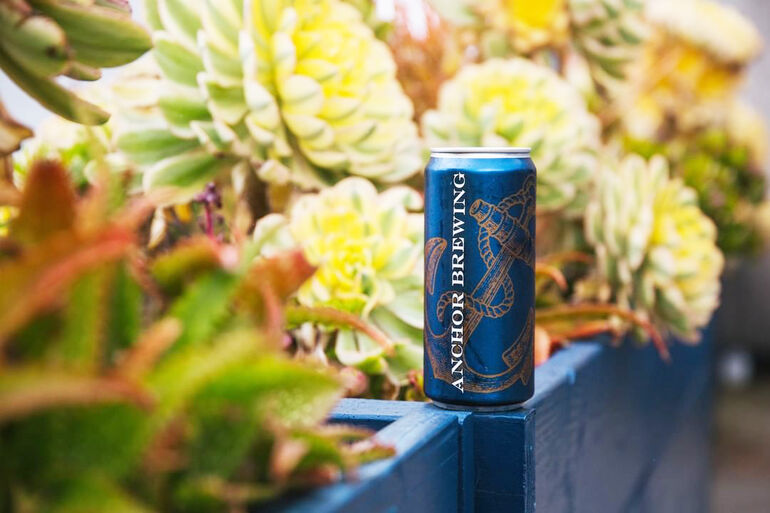Start 14-Day Trial Subscription
*No credit card required

Is the Craft Beer Bubble About to Burst?
Craft brewing has always been rooted in biblical themes. David versus Goliath. A crusade against corporate money changers whose mundane beer had taken over the temple. Authenticity versus the idol of heavily advertised American premium lagers.
But these days, it seems craft’s high-road themes first established by homebrewing are getting slightly sullied, perhaps inevitable for a cultural movement that is now an industry. Due to the explosive increase in brewery start-ups, craft brewers are spending much of their time competing against one another—whether it’s on the retail shelves or in pursuit of the best hops. These “in-house” problems don’t include the competition against formerly independent brewers now owned by the macro Goliaths, proving to be a headwind when it comes to success at taps and on retail shelves.
On the other end of the spectrum, well-known craft brewers have garnered headlines by going out of business or reorganizing. With hard seltzer and cannabis beers turning many heads and joining the already stiffer competition from spirits and wine, is craft’s bubble bursting under competitive pressure? Will the originators of America’s flavorful beer category have to reinvent themselves yet again?
In key respects, current headaches for craft look like a new cycle of familiar problems from the times when bubbles burst twice in the early days of the movement. Yet, there doesn’t seem to be any sense of depression, alarm or overt concern. Perhaps the Brewers Association and its board of directors has been lured into a false sense of security due to the current scale of new brewery expansion. Just as likely, craft brewers are so independent by nature that “doing their own thing” may be helping turn a revolution into something resembling Robespierre and his compatriots gallivanting through the streets of Paris.
 In the beginning, the allure of craft beer’s two-step formula—make flavorful beer, then sell it—led to lots of busts in the 1980s. Either the beer wasn’t good enough, consumers didn’t understand it or business skills were lacking. Fritz Maytag’s Anchor Brewing Company (now owned by Sapporo, a Japanese brewing conglomerate) and Boston Beer’s Jim Koch (the king of the craft contract brewers) emerged as major success stories. Only hoary tales remain from many other intrepid pioneers who fell by the wayside such as Jack McAuliffe or Bill Newman.
In the beginning, the allure of craft beer’s two-step formula—make flavorful beer, then sell it—led to lots of busts in the 1980s. Either the beer wasn’t good enough, consumers didn’t understand it or business skills were lacking. Fritz Maytag’s Anchor Brewing Company (now owned by Sapporo, a Japanese brewing conglomerate) and Boston Beer’s Jim Koch (the king of the craft contract brewers) emerged as major success stories. Only hoary tales remain from many other intrepid pioneers who fell by the wayside such as Jack McAuliffe or Bill Newman.
Fritz Maytag of Anchor Brewing Co. was one of the earliest major success stories of the independent brewing movement of the 1980s.
By the mid-1990s, thanks to better entrepreneurial skills, craft’s truly innovative beer created by ingenious brewing operations full of American moxie began to take hold before the movement started to implode again. Although the fresh beer and the fresh flavors caught the imagination, the sudden surge led to craft brewing’s second major reckoning.
Investment money began flooding in through Initial Public Offerings to a business that Wall St. didn’t really understand. Brilliant brands and solid execution from Pete Slosberg and Matthew Reich resulted in too much money, too much equipment and too much beer for a general populace not fully ready for a sudden jolt of hops, the darkest of stouts or the slightest shift away from American premium lagers. Bad publicity followed from major financial implosions while both Pete’s Wicked Ale and the New Amsterdam brands disappeared. The macros seized the moment and sought to reclaim their territory. Contract-brewed beer couldn’t be considered craft, went this media campaign. Stale, “skunk beer” became an accusation-by-implication during the Budweiser brand’s very public and successful born-on date initiative.
There were enough intelligent and hard-working craft brewers who remained standing to sustain the movement. (Some of them were just lucky to survive at a time when craft brewing underwent an inversion; the number of closings exceeded openings.) The survivors focused on steady, incremental growth. Using social media and outstanding beer, they eventually defeated the macros’ heavily funded public relations and advertising campaigns. A new generation including brands like Lagunitas, Deschutes, Stone and SweetWater along with others joined Boston Beer, Sierra Nevada and New Belgium to become familiar brands in the Brewers Association’s annual Top 50 listing.
Alas, the two-decade juggernaut is faltering. Those big, familiar Top 50 craft brewer brands and their flagship beers are losing market share no matter if the styles are American versions of IPA, Belgian-style brews or German lagers. The fact the stalwarts are losing share to smaller, independent BA breweries serving across the bar in taprooms or selling packaged beer direct is little cause for optimism. (Overall, there was four percent growth by all craft beer makers as defined by the BA in the first six months of 2019, matching the results from 2018.) The soul of the BA may continue to belong to expertly run brewpubs in addition to microbrewers who specialize in keg distribution and a tasting room. But when it comes to other craft specialties like sour beer and food pairing, there isn’t much evidence these elements are driving strong growth.
Poor business judgment has led to major bankruptcies or reorganizations – a development not far removed from the Wall St. implosion of the 1990s. The aptly dubbed SKUmageddon means there are too many beers, once again, for a market not ready to absorb them. Only this time, it’s not big Wall St. money flooding the market. It’s relatively small money. Virtually any entrepreneur can find enough financing and investment to join the parade by opening a brewpub or a microbrewery. As a result, old beer on retail shelves has become a mainstay and an unspoken scandal. Craft drinkers must choose among local brews that are sometimes popular due to where they were born rather than the beer in the can. Sometimes the execution is bad enough it’s difficult to tell whether a beer is poorly made, stale or both.
Enjoying this battle for shelf space are the macros. The biggest corporate breweries are striking back with strategies based on buying up craft brewers. Acquired brands such as Lagunitas, Elysian, Terrapin, Four Peaks, Karbach and Wicked Weed are contributing their expertise to a nationwide system of breweries. Macros and their sensory panels are pinpointing beers to distribute nationally that fit the craft ethos of fantastic flavor and innovation. Marrying this approach to excellent distribution through established networks means the macros are succeeding when it comes to the longtime ethos of flavor innovation and freshness. It indicates the campaign to draw attention to the “Independent” seal signifying membership in the BA has yet to be decisive.
Make no mistake. The freshness and innovation battles are being won by the BA’s craft brewers in tasting rooms and brewpubs. But the revolution is being lost at the overcrowded retail package level. If the idea is to have better beer choices, what can the craft beer industry on the BA side of the ledger do to reinvent itself once again in a way that doesn’t rely on new brewery openings?
First, put an end to consumers having a good reason to be fearful of stale packaged beer, much of it carrying a label from the BA declaring the brewery to be “Independent.” Make this a headline issue, starting with not allowing medals awarded at the Great American Beer Festival to be used to promote packaged beer by breweries who do not put date coding on their beer.
Everybody knows the game when it comes to beer with no born-on date. Brewers are willing to risk their reputation and/or exploit consumer ignorance rather than paying to take out-of-date, unsold beer off the shelf. For those not self-distributing, it’s up to their distributors to take back and destroy stale beer. With more public pressure to use born-on dates, brewers and distributors will have to pay more attention to their packaged beer and how much they distribute. What more effective way to help rein in SKUmaggedon and close out those absurd labels that advise “Drink Fresh” with no date coding.
Second, there needs to be a new category of craft brewer. Currently, anything above 15,000 barrels of output a year is considered a regional brewery, the next and only step above a microbrewery. For the sake of intelligent discussion as well as perception, it’s probably more accurate to characterize craft’s growth by drawing attention to a list that accounts for breweries between 15,000 and 50,000 barrels of output.
Call them “sub-regionals,” because most of them are selling beer close to home. When it comes to driving growth, the “sub-regionals” are making excellent beer distributed through packaging and retail taps in addition to tasting rooms. They are a unique type of operation compared to those breweries with more than 50,000 barrels of production or microbreweries. If not a separate list, perhaps it’s time to emphasize the Top 100 and bring more attention and buzz to these “in between” brewing juggernauts.

Macros and their sensory panels are pinpointing beers to distribute nationally that fit the craft ethos of fantastic flavor and innovation, such as Houston, Texas-based Karbach Brewing Co.
The Great American Beer Festival would do well to create a separate category for the “sub-regionals.” They comprise the type of brewery the macros have often bought and then boosted as new darlings—by essentially contract-brewing these brands and beers in larger volume. Why not celebrate the fact the BA membership includes many more “sub-regionals” rooted in their respective locations around the country who are highly successful and brewing independently?
Third, ramp up the Independent seal campaign. If it’s going to be a club-like effort to keep member brewers and craft consumers all on the same page, well, just keep using social media and preaching to the already converted choir. This approach has done little to slow the growth of non-independent craft brand, which are winning larger market share because they are fresh and well executed. The BA campaign needs to be boosted with a significant amounts of traditional electronic media advertising to distinguish independent craft to middle-of-the-road millennials shopping in grocery stores and quick-food outlets. Such a campaign does not have to benefit a specific size of brewery, because it can also encourage consumers to frequent tasting rooms that carry the Independent seal.
A higher profile for independent brewers through electronic advertising may risk a more public response from the macros, which have already proven they’re not afraid to blaspheme one another via advertising. But the ads don’t have to be adversarial like the faux crowd-funding campaign to buy back AB-InBev, an approach, which in many respects was preaching to the converted. Praise what’s good about being independent and ask consumers to look for the seal.
Due to its structure with a board of directors from member breweries, it’s essentially up to the membership of the BA to generate a method to sustain their revolution, the one currently being co-opted by macros. Having used their large capital resources to purchase craft breweries, America’s traditional brewers have found a distinct advantage in the packaged arena and, in fact, deserve credit for leading the way.
To borrow the format of Rod Serling, imagine, if you will, a consumer who enjoys a trip to a tasting room and then buys a retail six-pack made by the same brewer. If the beer in the six-pack does not have the same quality, is that progress? Sounds a lot more like the Twilight Zone.




